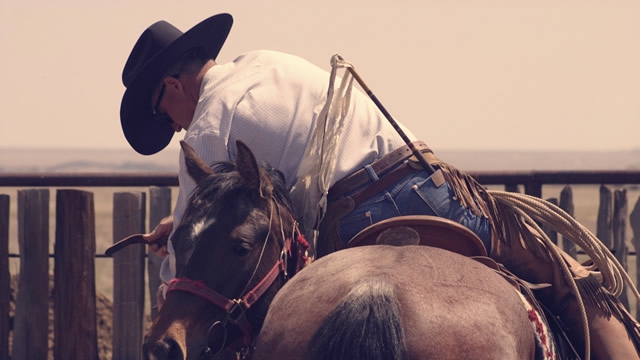Written by Martin Black
This article originally appeared in Eclectic Horseman Issue No.17
The horse’s self-preservation instinctively tells him to get away whenever he is unsure of humans. Once he gets confidant that we are not going to jeopardize his well-being he can be drawn to us. At first this will be out of curiosity and this can be a very important time. The horse is exploring and assessing us.
First impressions are so important because they only happen once and then they can never be taken back. That’s not to say you can’t counterbalance a bad experience with a multitude of good experiences, but that will just involve a lot more work than making a positive impression the first time.
After the horse has made his evaluation of us, he will do one of three things: first avoid the person, second remain neutral, or third come to the person for comfort. The third is what I would like to address. This obviously can be very useful if you want to catch a horse, but in a different situation if the horse knocks you down and steps on you, it could be dangerous. A horse injuring a person like this may not happen very often, but if it happens once, that’s one time too many.
With a little understanding between the horse and person, the probability of this happening wouldn’t be likely. For a horse to run into a person, the horse simply doesn’t respect the person’s space. If the horse is aware of the person’s presence and violates the person’s space anyway, that is nothing but lack of respect by the horse and also maybe lack of the person’s understanding of the danger or how to arrange things for a different outcome. Surviving these experiences yourself can be very educational, or better yet, witnessing and benefiting from someone else’s misfortune.
With the exception of stallions, it’s rare that a horse would knowingly and deliberately inflict pain upon himself. Quickly, for argument sake, try to think of a self-inflicted horse injury that is not associated with man or any manmade instruments. Understanding this point can help you understand how to present yourself in a way that’s consistent with how a horse evaluates his surroundings. A horse does not want to put pressure on himself. If he knows where the pressure is coming from, and where to get away from it, he will try to avoid it. The horse needs to see us as a fixed object and know from experience that running into us would be like hitting his head on a brick wall. This is very easy, quick, and effective when presented properly.
As the horse is coming into you, hold your hand out and lined up with the side of the horse’s face, between the eye and muzzle. Hold your hand there as if you are waiting for someone to shake hands. You are reaching and waiting, and if the horse keeps coming, just as his face is a few inches away, bump him with the base of your palm. The bump needs to be enough so he at least raises his head to get away. This cannot be a soft contact; it must be a quick jab that surprises the horse in order to be effective. Do not retreat to make a swing; he can see it coming and it will be perceived differently. As soon as the horse is reluctant to approach you, reach out and rub his head all around the area he just hit you with to show him it was his approach to you that was awkward and uncomfortable, not your approach to him.
The horse has no trouble identifying and avoiding a fixed object, so present it as such, and just before the horse establishes impact, add to the impact in a way that the horse is surprised his perception was way off.
This article originally appeared in Eclectic Horseman Issue No.17


